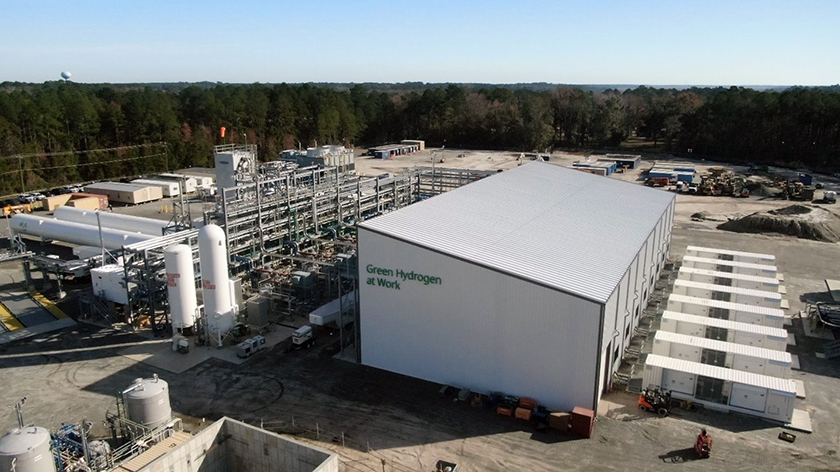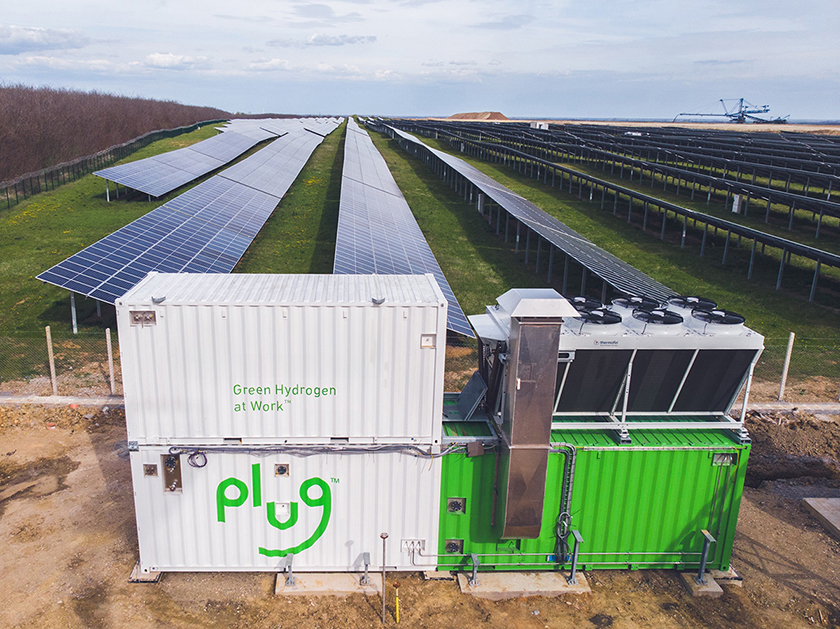Hydrogen Electrolyzers: Five Frequently Asked Questions
Hydrogen is poised to play a key role in addressing environmental concerns and transitioning towards cleaner energy alternatives. Among other applications, hydrogen can be used as a fuel for transportation and industrial processes, producing only water vapor as a byproduct when producing power through hydrogen fuel cells. This makes it a key to reducing greenhouse gas emissions and combating climate change, positioning hydrogen as a pivotal component in the future of clean energy.
As the demand for hydrogen increases, more companies are seeking to generate their own hydrogen to guarantee a consistent and reliable supply. Companies can integrate hydrogen production into their operations, deploying it as a clean and powerful energy source to fuel their processes, machinery, and even entire facilities.
What is a hydrogen electrolyzer, and how does it work?
Hydrogen electrolyzers can be used to produce entirely green hydrogen, using solar and wind to create the electricity that splits water into hydrogen and oxygen in a sustainable and efficient method called electrolysis. For many companies, the integration of electrolyzers into onsite operations allows them to harness the power of hydrogen in a way that aligns with their sustainability objectives.

A hydrogen electrolyzer is a device that harnesses the process of electrolysis to produce hydrogen gas. Electrolysis involves passing an electric current through water (H₂O), splitting it into hydrogen (H₂) and oxygen (O₂). The electrolyzer typically consists of electrodes immersed in water, and as the electric current flows through, it induces chemical reactions that separate the water molecules, releasing hydrogen at the cathode and oxygen at the anode. This process results in the generation of clean and sustainable hydrogen fuel, the only by-product being pure water.
What are the main types of hydrogen electrolyzers, and how do they differ?
There are three primary types of hydrogen electrolyzers, each with distinct characteristics. Alkaline electrolyzers use an alkaline solution (typically potassium hydroxide) as the electrolyte and are known for their efficiency and longevity. Solid oxide electrolyzers operate at high temperatures and use a solid oxide ceramic electrolyte, making them suitable for high-capacity and industrial applications. Proton Exchange Membrane (PEM) electrolyzers employ a solid polymer electrolyte membrane, allowing for higher current density, quick response times, and high-purity hydrogen production.
What are the practical applications of hydrogen produced by electrolyzers?
Hydrogen produced by electrolyzers has versatile applications across various sectors. In the realm of energy, it can fuel fuel cells for electricity generation, providing a clean and efficient power source. Industries can use hydrogen as a feedstock for chemical processes, reducing reliance on traditional fossil fuels. In transportation, hydrogen serves as a clean fuel for fuel cells, offering zero-emission energy where and when it’s needed. The adaptability of hydrogen makes it a key player in the transition to sustainable and eco-friendly energy solutions.
What are the benefits for companies producing their own hydrogen with electrolyzers?
On-site hydrogen production reduces dependency on external suppliers, fostering energy independence and security. The environmental benefits are substantial, with reduced carbon footprint and lower emissions compared to traditional hydrogen production methods. Overall, producing hydrogen on-site with electrolyzers aligns with corporate sustainability goals and contributes to a greener and more resilient business model.

What challenges do hydrogen electrolyzers face, and how are they being addressed?
Hydrogen electrolyzers face challenges such as high initial costs, reliability/availability issues, and the need for rare or expensive materials. Researchers and industry experts are actively addressing these challenges through ongoing innovations. Advances in materials science aim to develop more cost-effective and durable components for electrolyzers, lowering the overall system cost. Improvements in system efficiency are pursued through engineering optimizations and the development of advanced catalysts. Scaling up production processes and standardization efforts are also underway to make electrolyzers more economically viable and accessible for widespread adoption. The collaborative efforts of the scientific community and industry stakeholders continue to drive progress in overcoming these challenges.
Conclusion
In adopting on-site electrolyzers, companies are not just embracing a technological solution; they are revolutionizing their approach to energy and sustainability. This strategic shift fosters energy independence, reduces operational expenses through renewable energy utilization, and significantly lowers carbon footprints. Beyond economic advantages, the integration of electrolyzers aligns with corporate sustainability goals, contributing to a greener and more resilient business model. As these companies pave the way for clean and efficient hydrogen production, they are not merely adapting to change – they are actively shaping a future where responsible practices and environmental stewardship define the new standard for success.
Learn more in our articles:
Electrolyzer 101: Growing Green Hydrogen
Swiftly Deploying Green Hydrogen with Plug Containerized Electrolyzer Solution
The post Hydrogen Electrolyzers: Five Frequently Asked Questions appeared first on Plug Power.